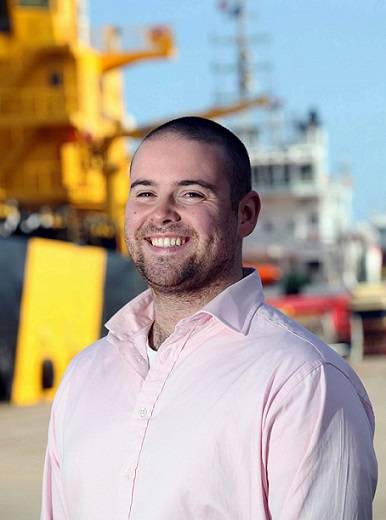Cold SCAR Steel is Weapon of Choice on Baltic 2
Ecosse Subsea Systems (ESS) reported a successful start to a 10-week boulder clearing and trenching campaign on the Baltic 2 offshore wind farm project.
Mobilized onboard the Siem Topaz anchor handling vessel, Ecosse Subsea’s SCAR subsea plough system is engaged on route clearing and pre-lay trenching operations on behalf of Siem Offshore Contractors. Soils have varied from dense sands and hard clays to high boulder density ranging up to four meters, but the SCAR has demonstrated its versatility and capabilities in dealing robustly with challenging conditions.
The eight-strong ESS team are completing between four and eight array routes per day depending on soil conditions and boulder density. Weather conditions have varied between calm and choppy waters with up to 4m waves, but the SCAR plough has proven its suitability for working in diverse weather situations.
Ecosse Subsea Systems project engineer, Lewis Watt, said, “We are very pleased with the initial phase of the campaign and are making good progress despite some tough geographic challenges. The SCAR’s mobility and ease of launching and recovery is ideally suited to smaller anchor handling vessels such as the Topaz and it has handled extremely well in rough conditions.
“We are on schedule to complete the workscope in early June as planned and the SCAR’s performance has been rapid and efficient, despite having to be lifted and shifted between each cable route. We have a number of tenders outstanding and there has been a marked upsurge in interest from clients who are aware of the cost saving potential of SCAR.”
The SCAR plough had earlier been truck-transported from Aberdeen to Gdansk in Poland for a fast and efficient mobilization in the Baltic.
Baltic 2 is an 80-turbine development located 32 kilometers north of Rügen Island in the Baltic Sea. The 27-square-kilometer site spans water depths ranging from 20 to 45 meters LAT and has a wide array of soil conditions from fine sands to gravels and cobbles.
Boulder clearance and multi-pass trenching to 1.5 meters depths is being performed over a 90-kilometer route with ESS using its own ROV system to monitor, survey and record operations, while a vessel mounted multi-beam determines the quality of trenching achieved.
This 80-cable inter-array workscope follows on from two highly successful projects ESS completed on behalf of Total in Shetland and on E.ON’s Humber Gateway wind farm project in the North Sea.
Mr. Watt added that SCAR was becoming a preferred option by cable manufacturers and product warranty holders, while clients are requesting ESS adapt their tools for their specification requirements.
www.ecosse-subsea.com













